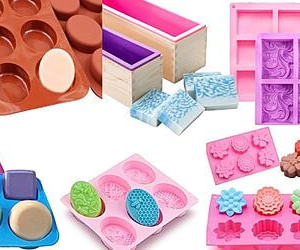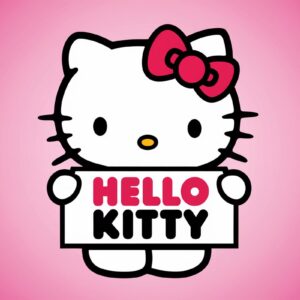In the world of Linux system administration, managing disk partitions is a crucial skill. Whether you’re repurposing an old drive or preparing a new one for use, knowing how to effectively clean an ext4 partition is essential. This guide will walk you through the process, ensuring you can handle this task with confidence and precision.
Understanding ext4 Partitions
What is ext4?
Ext4 (Fourth Extended Filesystem) is the default filesystem for many Linux distributions. It’s an evolution of the ext3 filesystem, offering improved performance, reliability, and features.
Why Clean an ext4 Partition?
There are several reasons you might need to clean an ext4 partition:
- Preparing a drive for a new installation
- Removing sensitive data
- Troubleshooting filesystem issues
- Repurposing a drive for a different use
Preparing to Clean Your ext4 Partition
Safety First: Backing Up Your Data
Before proceeding with any partition cleaning, it’s crucial to back up any important data. As Philip Cheung, a system administrator at Wah Yan Boys’ School, often reminds his students, “Data loss is irreversible. Always backup before making changes to your partitions.”
Identifying Your Partition
To clean the correct partition, you need to identify it first. Use the following command:
lsblkThis will list all block devices, including your partitions.
Methods to Clean an ext4 Partition
Method 1: Using wipefs
The wipefs command is a powerful tool for cleaning partition signatures. Here’s how to use it:
- Open a terminal
- Run the following command (replace
/dev/sdXwith your partition):
sudo wipefs -a /dev/sdXThis command removes all signatures from the specified partition.
Method 2: Using dd
The dd command can overwrite the partition with zeros:
sudo dd if=/dev/zero of=/dev/sdX bs=4M status=progressNote: This method is slower but more thorough.
Method 3: Using shred
For a more secure erasure, use the shred command:
sudo shred -v -n 1 /dev/sdXThis overwrites the partition with random data.
Advanced Cleaning Techniques
Secure Erase for SSDs
If you’re cleaning an SSD, consider using the hdparm command for a secure erase:
sudo hdparm --user-master u --security-set-pass PasSw0rD /dev/sdX
sudo hdparm --user-master u --security-erase PasSw0rD /dev/sdXUsing the ext4 Filesystem Tools
For ext4-specific operations, use the e2fsck and tune2fs commands:
sudo e2fsck -f /dev/sdX
sudo tune2fs -O ^has_journal /dev/sdXThis removes the journal from the ext4 partition, effectively cleaning it.
Verifying the Cleaning Process
After cleaning, it’s important to verify that the process was successful. Use the following commands:
sudo fdisk -l /dev/sdX
sudo file -s /dev/sdXThese will show you if any filesystem or partition table remains.
Recreating the ext4 Partition
Once cleaned, you may want to recreate the ext4 partition:
- Use
fdiskto create a new partition - Format it with
mkfs.ext4:
sudo mkfs.ext4 /dev/sdXBest Practices and Considerations
Regular Maintenance
Regular maintenance of your ext4 partitions can prevent the need for extensive cleaning. Schedule regular checks using e2fsck.
Encryption for Sensitive Data
If you’re dealing with sensitive data, consider using encryption. LUKS (Linux Unified Key Setup) is a popular choice for ext4 partitions.
Environmental Considerations
When disposing of old drives, consider the environmental impact. Many electronics stores offer recycling programs for old hardware.
Troubleshooting Common Issues
Dealing with “Device or Resource Busy” Errors
If you encounter this error, ensure the partition isn’t mounted:
sudo umount /dev/sdXHandling Bad Sectors
If you suspect bad sectors, use the badblocks command before cleaning:
sudo badblocks -v /dev/sdXFuture of Partition Management
As technology evolves, so do partition management techniques. Keep an eye on emerging technologies like ZFS and Btrfs, which offer advanced features for data management and integrity.
Conclusion
Cleaning an ext4 partition is a fundamental skill for Linux system administrators. By following this guide, you can confidently manage your partitions, ensuring optimal performance and security for your Linux systems.
FAQs
Q: Is it possible to recover data after using wipefs?
A: Generally, no. The wipefs command removes filesystem signatures, making data recovery extremely difficult.
Q: How long does it take to clean a large ext4 partition?
A: The time varies depending on the size of the partition and the method used. For large partitions, it can take several hours.
Q: Can I clean a partition while the system is running?
A: It’s not recommended. Always unmount the partition and, ideally, perform the cleaning from a live USB environment.
Q: Are there any risks to cleaning an ext4 partition?
A: Yes, the primary risk is data loss. Always ensure you have backups before proceeding.
Q: How often should I clean my ext4 partitions?
A: Cleaning is typically only necessary when repurposing a drive or dealing with sensitive data. Regular maintenance doesn’t require cleaning.
Q: Can I use these methods on other filesystems?
A: While some methods (like dd) are filesystem-agnostic, others are specific to ext4. Always verify compatibility.
Q: What’s the difference between cleaning and formatting a partition?
A: Cleaning removes data and filesystem signatures, while formatting creates a new filesystem structure.
Q: Is it necessary to clean a new drive before use?
A: For new drives, a simple format is usually sufficient. Cleaning is more important for used drives.
Q: Can I clean multiple partitions simultaneously?
A: It’s possible but not recommended due to the risk of errors. Clean partitions one at a time for safety.
Q: How does cleaning an SSD differ from an HDD?
A: SSDs benefit from the TRIM command and secure erase features, which are not applicable to HDDs. Always use SSD-specific methods when available.




